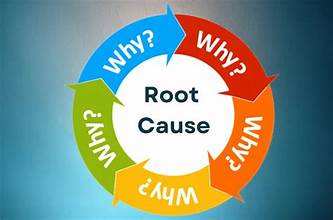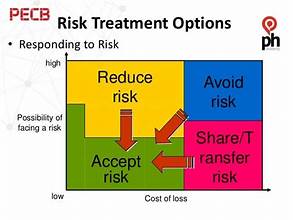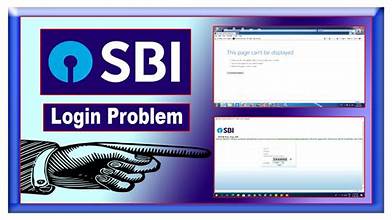What is the Loguytren Problem?
The loguytren problem is a condition that has been causing significant concern among medical professionals and patients alike, but many are still unaware of the specific details surrounding it. Often misunderstood, this issue can lead to discomfort, frustration, and complications in daily life. Understanding the loguytren problem begins with recognizing its definition, the factors contributing to it, and how it can be managed or prevented.
The loguytren problem generally refers to a set of symptoms that involve various health complications related to a specific area of the body. These complications can range from mild symptoms that are easy to overlook to more severe manifestations that demand immediate medical attention. While it is often difficult to pinpoint the cause right away, proper diagnosis and understanding can help individuals manage the condition and improve their quality of life.
Table of Contents
Symptoms of the Loguytren Problem
One of the most common aspects of the loguytren problem is the variety of symptoms it can present. These symptoms vary in intensity, frequency, and duration, which makes it challenging to recognize the issue in its early stages. Here are some of the key symptoms associated with the loguytren problem:
- Pain and discomfort: A sensation of persistent pain in a specific part of the body is often a sign of the loguytren problem. This pain can range from dull aches to more intense throbbing sensations, making it difficult to perform everyday tasks.
- Swelling or inflammation: Many individuals with the loguytren problem experience swelling in the affected area. This can lead to stiffness and restricted movement, further exacerbating the problem.
- Numbness or tingling: Another common symptom is a feeling of numbness or tingling, particularly in the limbs or joints affected by the loguytren problem. This sensation can be both uncomfortable and unsettling.
- Limited mobility: Over time, the loguytren problem may lead to reduced range of motion in the affected joints or muscles, making it difficult to carry out basic movements like bending, stretching, or walking.
Recognizing these symptoms early on is key to addressing the loguytren problem and preventing further complications. If left untreated, it can potentially lead to chronic conditions that are harder to manage and treat.
Causes of the Loguytren Problem

The causes of the loguytren problem are not always immediately clear. However, several factors may contribute to its development. Genetic predisposition, lifestyle choices, and environmental influences are all factors that can play a role. Understanding the possible causes is crucial in preventing and managing the loguytren problem.
- Genetic factors: In some cases, a person may be genetically predisposed to the loguytren problem. Certain inherited conditions can increase the likelihood of developing symptoms related to this issue. A family history of similar problems might indicate a higher risk for future generations.
- Injury or trauma: Physical trauma or injury to the affected area can trigger the loguytren problem. This could be due to overuse of a particular body part, accidents, or even repetitive motion injuries that strain muscles and joints.
- Age and wear-and-tear: As individuals age, their body’s natural ability to recover from physical strain diminishes. This can lead to conditions like the loguytren problem, where the cumulative effects of wear-and-tear on the body’s systems begin to show more prominently.
- Environmental factors: Living or working in environments that require repetitive motions, heavy lifting, or physical strain can increase the risk of developing the loguytren problem. Occupational hazards often contribute to the onset of the condition.
By understanding the underlying causes of the loguytren problem, individuals can take proactive steps to avoid or manage the condition. Lifestyle adjustments, such as exercise, diet, and ergonomics, can be instrumental in preventing the symptoms from worsening.
Treatment Options for the Loguytren Problem

When dealing with the loguytren problem, there are several treatment options available, ranging from conservative measures to more aggressive interventions. The choice of treatment depends on the severity of the symptoms and the individual’s overall health. It is important to work with a healthcare provider to determine the best approach for managing the loguytren problem.
1. Physical Therapy and Rehabilitation
Physical therapy is often one of the first recommendations for addressing the loguytren problem. A physical therapist can create a customized program that focuses on stretching, strengthening, and improving flexibility in the affected area. This type of treatment is particularly useful for individuals dealing with limited mobility, stiffness, or muscle weakness due to the loguytren problem.
2. Medications and Pain Management
For those experiencing pain and discomfort, medications may be prescribed to relieve symptoms. Nonsteroidal anti-inflammatory drugs (NSAIDs) are commonly used to reduce inflammation and alleviate pain associated with the loguytren problem. In some cases, corticosteroid injections may also be recommended for more severe inflammation.
3. Surgical Intervention
In rare cases where the loguytren problem does not respond to conservative treatments, surgical intervention may be necessary. This is typically reserved for individuals who have not achieved relief from physical therapy or medications. The goal of surgery is to correct underlying structural issues that contribute to the condition and provide long-term relief.
4. Lifestyle Modifications
Lifestyle changes can be essential in managing the loguytren problem. This includes adopting healthier habits such as maintaining a balanced diet, engaging in regular physical activity, and improving posture. Additionally, using ergonomic tools and practicing proper body mechanics can help reduce strain on the affected area and prevent the condition from worsening.
5. Alternative Therapies
In addition to traditional medical treatments, some individuals find relief through alternative therapies such as acupuncture, massage therapy, or chiropractic care. These treatments aim to alleviate muscle tension, improve circulation, and promote overall well-being, all of which can help reduce the impact of the loguytren problem.
Preventing the Loguytren Problem
Prevention is always better than cure, and this holds true for the loguytren problem. While not all cases can be avoided, there are several strategies individuals can adopt to reduce their risk of developing the condition or its symptoms.
- Exercise regularly: Engaging in regular physical activity can help keep the muscles, joints, and bones healthy, which can reduce the likelihood of developing the loguytren problem. Focus on strengthening exercises and stretches that improve flexibility and mobility.
- Practice good posture: Poor posture can exacerbate many health problems, including the loguytren problem. Make a conscious effort to sit and stand with proper alignment, and take frequent breaks if your job involves sitting for long periods.
- Avoid overuse injuries: Repetitive motions, especially in the workplace, can increase the risk of developing the loguytren problem. Try to incorporate rest periods into your routine and vary your movements to avoid strain on the same muscles or joints.
- Ergonomics: Investing in ergonomic furniture and tools can significantly reduce the strain on your body. Adjusting your workstation and practicing proper lifting techniques can help prevent the onset of the loguytren problem.
Also read Tophillsport com: Your Ultimate Guide to Sports and Adventure Gear
Conclusion: Managing the Loguytren Problem
In conclusion, the loguytren problem is a condition that can affect anyone, but understanding its symptoms, causes, and treatment options is crucial for managing it effectively. Early detection and appropriate intervention can significantly improve the quality of life for individuals dealing with this condition. Whether through physical therapy, medication, or lifestyle adjustments, there are numerous ways to address the loguytren problem and prevent it from worsening.
Taking a proactive approach to your health by practicing good habits, staying active, and seeking medical advice when needed will go a long way in minimizing the impact of the loguytren problem. By being informed and prepared, individuals can navigate the challenges posed by this condition and continue to lead healthy, fulfilling lives.
